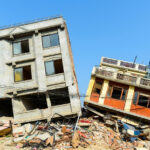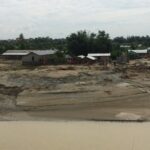Impact of COVID-19 on Nepali Businesses: Highlights of the NRB second follow-up survey
The prohibitory measures adopted by the Government of Nepal to control the spread of the COVID-19 crisis shattered the country’s economy, which contracted by 1.9% in the fiscal year 2019/20 compared to the fiscal year 2018/19. To study the impact of COVID-19 on Nepali industries/business enterprises, the Nepal Rastra Bank (NRB) surveyed 674 industries and businesses across 52 districts in June 2020. The survey focused on collecting data on the impact in the operations of the industries/ businesses, their production and turnover, job cuts, and their expenditure in salary and wages. Subsequently, the NRB conducted a follow-up survey in November 2020 and another one in April 2021 to monitor the recovery of the businesses. This article is a summary of the April 2021 follow-up report and does not account for the impact of the lockdown that started on April 29 in different parts of the country.
- 81.2% of the enterprises/businesses have resumed their operations. In June 2020, only 4.1% of the businesses were completely operational. This number gradually increased to 54% in November 2020 and reached 81.2% in April 2021 while 4.2% of enterprises are still not able to come into operation. The rest of the enterprises are partially operational. Sectors such as the electricity, gas & water sector and the communications sector witnessed 100% of the enterprises to be fully operational. Based on the scale of the businesses, as of April 2021, 74.4% of the country’s cottage industries, 79.2% of micro-enterprises, 81.7% of small enterprises, 74% of medium enterprises, and 90.5% of large enterprises have resumed operations.
- Industries/businesses are operating at over 60% of their capacity. In the initial survey, it was reported that industries/ businesses limited their production/trade to 29% of their capacity, which increased to 50.5% as of November 2020. The second follow-up survey showed that industries and businesses had increased their production/ turnover to 61.4% of their capacity. The production/ turnover of all sectors was found to have increased. The Food, Beverage and Accommodation sector accounted for the lowest recovery, with the sector’s turnover being able to reach 40.8% of its pre-lockdown numbers. The cottage, micro, and small enterprises were producing at around 60% capacity, while the medium and large enterprises were producing at 64.5% and 72.9% capacity, respectively.
- Employment rates have geared up and payment of salaries & wages are getting back to the previous rates. In terms of employment, the initial survey reported that the industries and business enterprises were forced to cut jobs of 22.5% of their employees, providing only 77.5% employment while paying only 63.4% of their salaries and wages. By November 2020, the enterprises provided 87.5% employment while paying 70.4% of their salaries and wages. The April 2021 follow-up survey showed that industries and business enterprises provided 93.8% employment and paid 88.5% of their salaries and wages expenses on average. Furthermore, the mining sector was able to provide salaries and wages higher than in the pre-lockdown period. Similarly, the electricity, gas & water sectors, and the communication sector were able to pay 100% of their salaries and wages by April 2021. Almost all sectors were able to pay over 80% of their salaries and wages expenses except the real estate sector, which was only able to pay 67%. It was also found that the percentage of employment provided by medium and large enterprises decreased to 72.5% and 79.7% compared to 83.1% and 86% in June 2020 respectively, as they had not been operating at full capacity. The employment provided by the cottage, micro, and small enterprises, however, increased to over 90%.
- Most of the industries/ businesses saw a decline in business due to a decline in market demand. It was identified that most businesses struggled to meet their operational expenditures due to the fall in market demand induced by the COVID-19 pandemic. The enterprises also claimed to have had difficulty in getting refinancing and concessional loans and getting additional loans to sustain their businesses.
Despite the significant improvement in the operation of industries and business enterprises of Nepal, with the overall production, turnover, and the state of employment speeding up the recovery, the latest series of lockdowns owing to the second wave of the COVID-19 pandemic currently ravaging the country might have put a halt on recovery.
Sugam Nanda Bajracharya is an MBA graduate from Stamford International University. Currently, he is working as a Beed at Beed management and a Research Associate at Nepal Economic Forum. Sugam works actively with the private sector and development partners on topics related to trade, sectoral studies, economic policy research, policy and strategy development.





